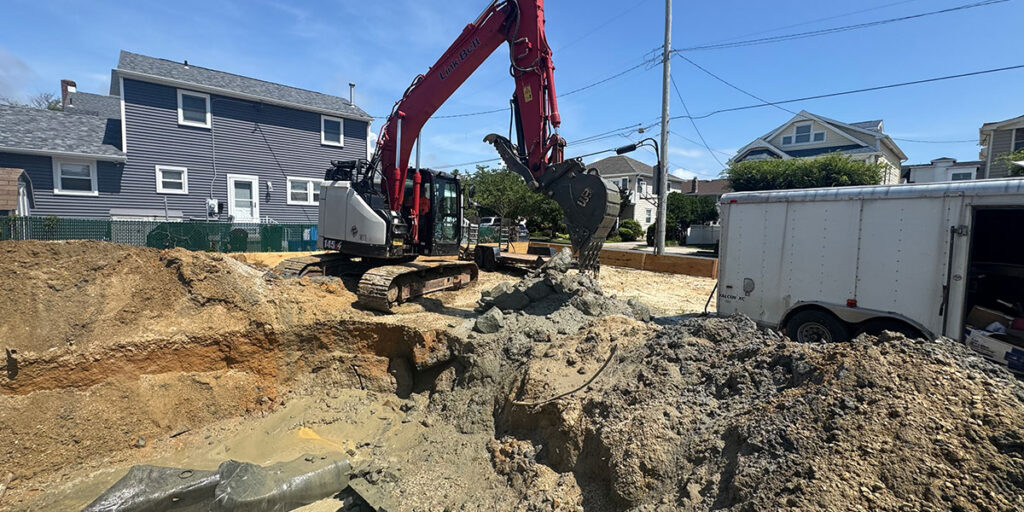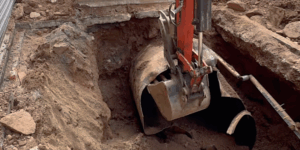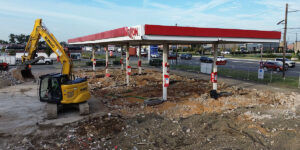Uncovering Hidden Risks: A Case Study on Underground Tank Removal in Margate
At our environmental services company, we recently partnered with an environmental engineering firm to tackle a challenging redevelopment project at a former gas station and auto repair shop in Margate. The site, slated for redevelopment, presented several typical environmental issues for a former gas station that needed to be addressed before progress could begin. Here’s how we navigated the complexities of this project and why proper due diligence is critical for property redevelopment.
The Discovery: Hidden Tanks and Contamination
The engineering firm initially conducted a Ground Penetrating Radar (GPR) survey, revealing two 6,000-gallon underground storage tanks, a 500-gallon tank, and two hydraulic lifts that required removal. Records indicated the tanks had been “abandoned in place” years ago, supposedly filled with sand to render them inert. However, just a week before we mobilized, a third 6,000-gallon tank was discovered, expanding the scope of our work.
As soon as we began excavating, the strong smell of gasoline filled the air. Upon opening the first tank, it was clear something was amiss. Despite being filled with sand, the tanks appeared to have been improperly cleaned before abandonment, and evidence suggested they had been leaking for some time. The surrounding soil and groundwater were heavily contaminated, a pattern that held true for all three tanks.
The Response: Assessing and Addressing the Damage
After safely removing the tanks and hydraulic lifts, we dug test pits across the site to determine the extent of the contamination. This step was crucial for developing an accurate scope of work for the removal and disposal of the impacted soil and groundwater. The process underscored the importance of thorough environmental assessments, as contamination can spread far beyond the immediate vicinity of the tanks.
The Bigger Picture: The Risks of “Abandoned in Place” Tanks
Decades ago, it was common practice to abandon underground storage tanks in place, often by filling them with sand or other materials. When done correctly, with tanks properly cleaned and in good condition, this method could be effective. However, as we saw in Margate, some tanks were abandoned improperly—either already leaking or not adequately cleaned—leading to significant environmental liabilities.
These hidden issues can create costly problems for new property owners. Contaminated soil and groundwater not only pose environmental risks but can also delay redevelopment projects and lead to substantial remediation expenses. This is why due diligence, including GPR surveys and environmental assessments, is non-negotiable when purchasing or redeveloping properties with a history of commercial or industrial use.
Our Expertise: Helping You Avoid Costly Surprises
Since 1999, our team has been helping property owners and businesses safely remove underground storage tanks and address environmental challenges. The Margate project is just one example of how we combine experience, precision, and responsiveness to deliver solutions that protect both the environment and our clients’ investments. If you’re purchasing or redeveloping a property, don’t risk inheriting an environmental catastrophe. Contact us today—we always answer the phone and are ready to help you navigate the complexities of underground tank removal and site remediation.







